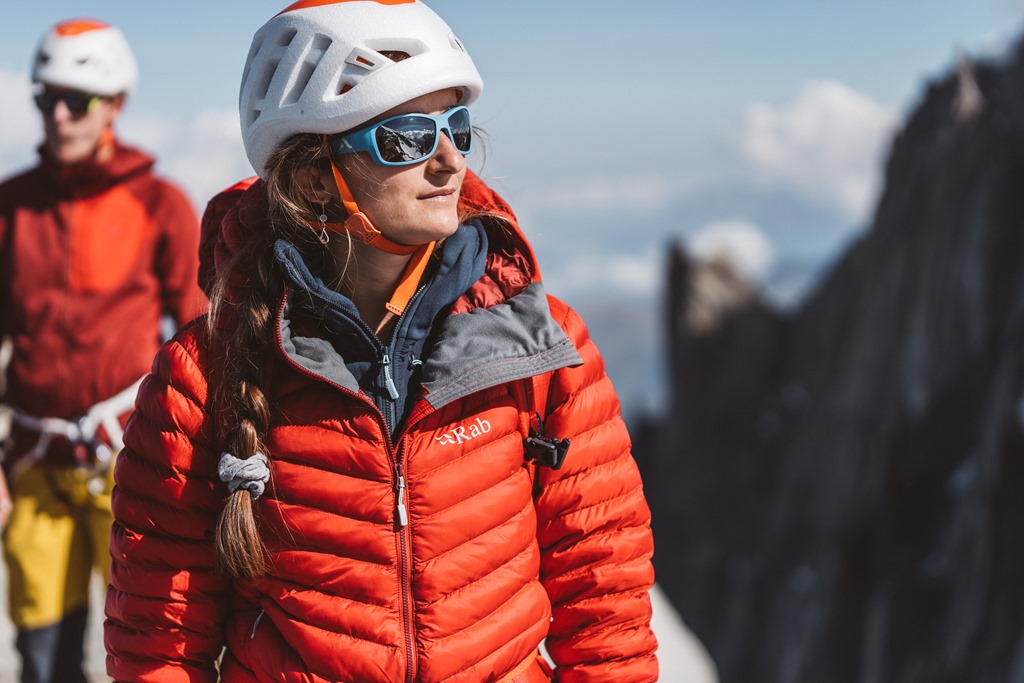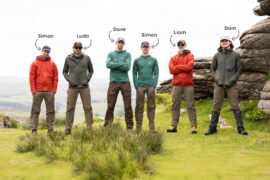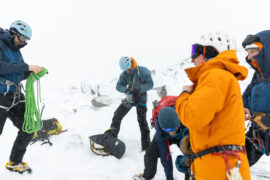Take a look at the key things you’ll need to know when choosing your perfect Rab
…
Brr! The nip in the air is certainly creeping its way in. The first flakes of snow are beginning to fall across the hills turning them from green to a dappled white, the mornings are becoming chillier and the air, crisper by the day. Just over the North Sea in Scandinavia and south into the European Alps, snow has now been falling for weeks and thick layers of powder are almost ready to be skied over, trudged through, and built into shelters to protect us from the elements, it’s funny how something so cold can be such a good insulator when used properly.
Speaking of which, good insulation is essential to keeping warm and enjoying the wintery outdoors. The right insulated jacket can be the perfect mid-layer, snuggly fitting beneath a hard shell waterproof. In colder, dryer conditions the right insulated jacket can instead take the form of a large, thick outer shell filled with insulating down feathers keeping your body heat with you in temperatures well below zero. It is important when choosing the right insulated jacket that you understand the activities you’re undertaking and know the options available to you which make a jacket ideal for such situations.
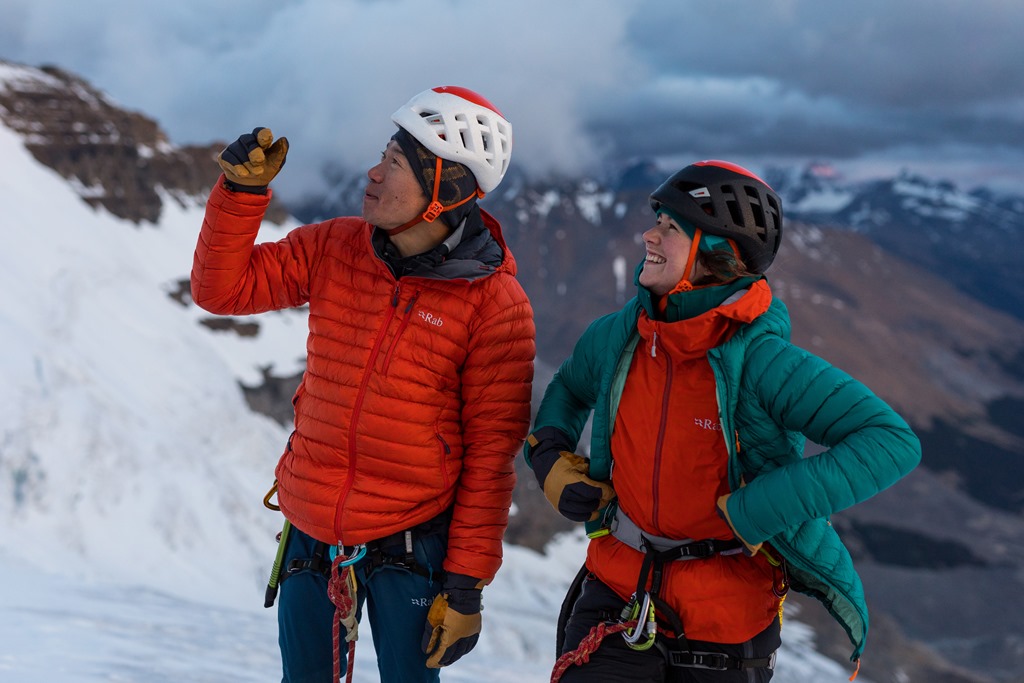
Rab
One of the brands at the very forefront of the technical down jacket market is of course British brand, Rab. Founded by famous mountaineer and company namesake Rab Carrington, they are known as the “masters of insulation.” Within Rab’s line of different insulated jackets, you will find superb quality goose down, expert construction, and several different jackets across the range that are highly specialised for certain uses and activities.
We’re going to talk about the different features and varieties of the insulated jackets available and then give some examples of Rab jackets that fall into each category. We’ll start with one of our most frequently asked questions: Down or Synthetic?
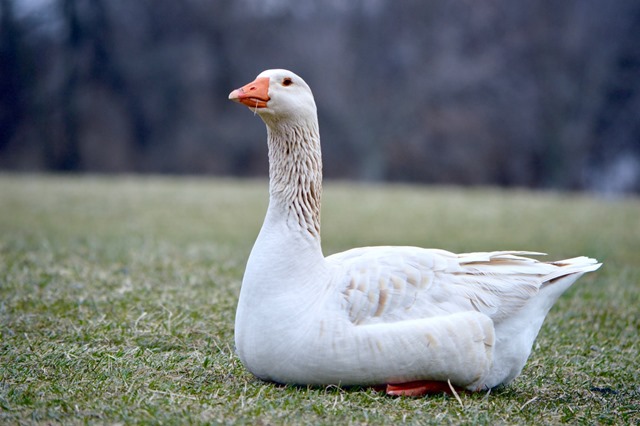
Down
Down is a natural feather obtained from geese and ducks, they are the feathers they use to keep warm and are found next to the skin. Generally speaking, geese have larger feathers which can trap more warm air for their weight, we call this the warmth to weight ratio. It means then that since you don’t have to have as many goose feathers in the jacket to be as warm as a duck, it’ll pack down smaller and be lighter. The warmth of a down jacket, or the ‘loft’, is measured in FILL POWER (FP). The higher the FP rating and the loft, the better your jacket can hold the warm air, and the warmer and more packable the jacket.
Down has a drawback, it loses essentially all of its ability to retain heat when wet, water makes the down feathers stick together and there is nowhere for the warmth to go. Down jackets only perform well in dry conditions or when protected with a waterproof shell over the top of it.
Rab jackets come with a hydrophobic (water-resistant) Nik-wax treatment to the feathers meaning they can repel water for longer meaning you have more time before having to run for cover from the rain. Rab only uses the highest-quality, traceable cruelty-free down which is a by-product of the meat industry. Some of the Rab Jackets which use down insulation are the popular Microlight jackets, Electron Jackets, ad Valiance Jackets.
Several Rab Jackets such as this season’s Microlights use a wonderful recycled down supplied to them by P.U.R.E, read more about this amazing recycled down HERE.
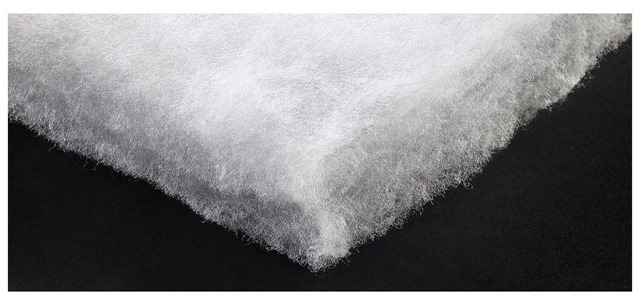
Synthetic
Synthetic fill jackets use man-made polyester insulation which is used to imitate the air-trapping down filaments to create pockets of warm air. Polyester being plastic is of course, water-resistant. Synthetic insulation when wet will still provide up to 90% of the insulation it has when dry. This makes it far more suited to wet environments and heavy aerobic activity which causes you to sweat heavily.
Due to their structure, synthetic jackets most often do not pack down as well as down. It is also considered a sweatier heat; liquid vapour doesn’t quite as easily pass through synthetic insulation. Down is certainly more breathable.
Rab’s very special Cirrus synthetic insulation is used throughout their synthetic range. This outstanding, recycled insulation has an excellent reputation as one of the best out there. Popular jackets from Rab’s range that utilize synthetic insulation are the Cirrus range which includes the Flex, Alpine, and Nebula Pro jackets which are thicker and puffier allowing them to withstand some serious cold.
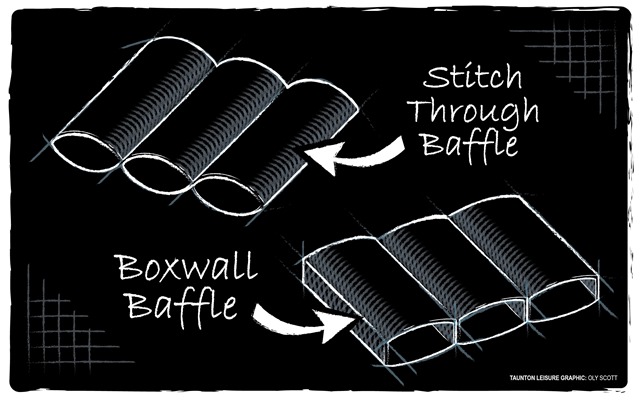
Baffles
Baffles are the compartments sewn or laminated together which form the main body of the jacket and contain the insulation. The two which are mainly used across our range are Stitch-through and Box wall.
Stitch-Through
On a lightweight, packable insulated jacket, the superior baffle option is stitch-through. It is an efficient way of evenly distributing the insulation and holding it close to you. There is stitching holding each baffle closed and separating it from other baffles. Great for surface area, however the stitching can cause a thinner place where heat can be lost and also allows a spot where water can more easy seep through. Rab Jackets which utilise stitch-through baffles include the Microlight jackets, Cirrus Flex Jackets and the Electron Pro Jackets.
Box-wall
Box-wall baffles allow the insulation to expand to its full loft making warmer jackets as well as minimizing cold spots, many jackets of this type are laminated meaning water wont seep through as easily and the special box wall construction means that the space between baffles is insulated. Rab jackets using Box wall baffles include the Valiance Jackets and Parkas.
Baffle Size
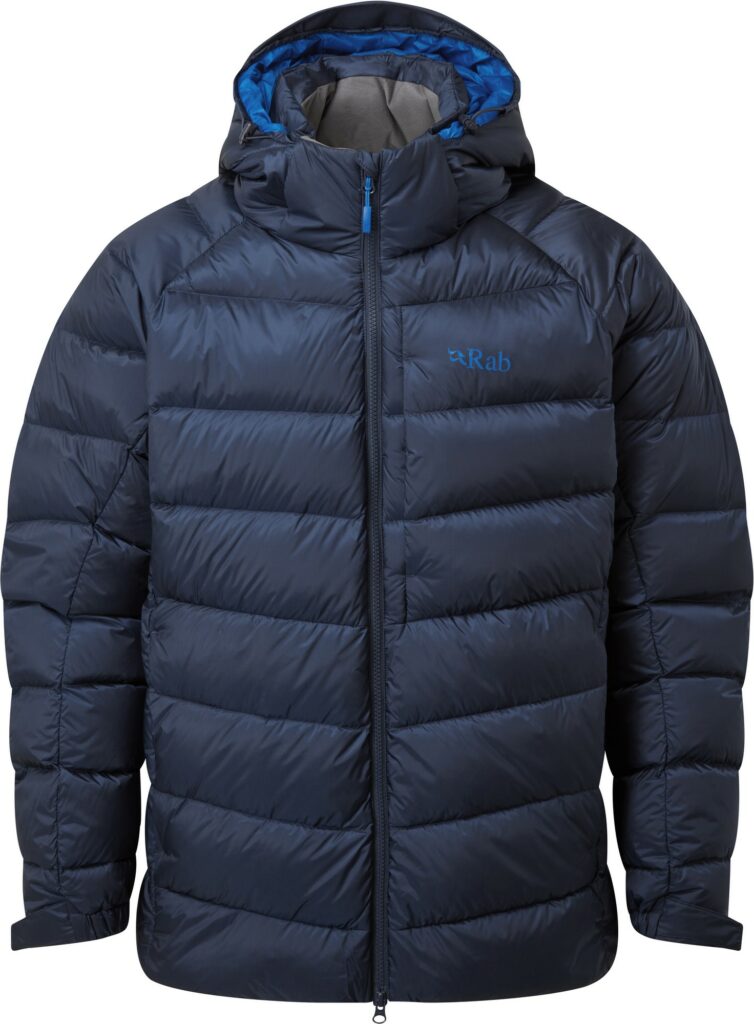
Wide Baffles
Wider baffles hold the most warmth as they contain larger amounts of down and are constructed so that there are fewer seems where heat could escape. They do not pack down as well as a narrower baffle-down jacket and do not make good mid-layers. They are best when thrown over the top of all layers when stopped between activities.
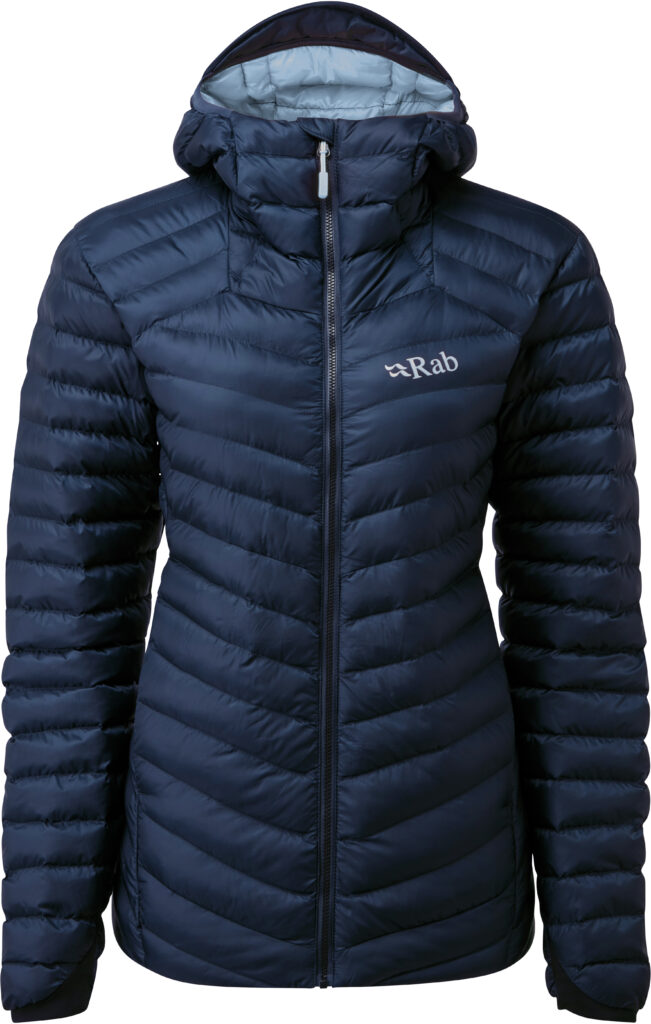
Narrow Baffles
Also known as micro baffle jackets, these make perfect mid-layers under waterproofs in wet conditions or outer-layers in dry cool weather. They pack easily into your bag for when you need to pull them out at a moments notice. You will find these on the Microlight jackets and Cirrus Flex Jackets.
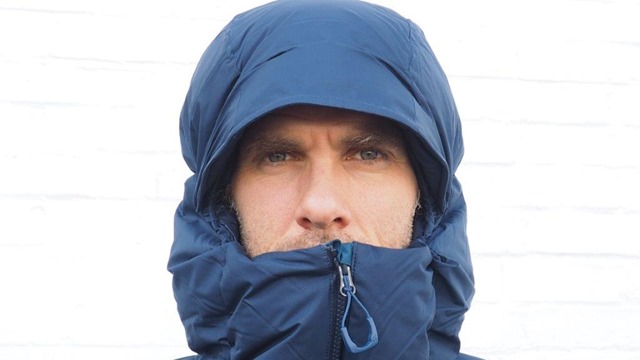
Hoods
Hoods are optional, there are some jackets with and some without, almost all Rab hoods are made to be able to fit over a climbing helmet as insulated jackets are a favourite with belayers. Hoods are great for low-activity in cold environments but if your looking for something lightweight to keep your core warm say for cold weather running, then a hood will only add unnecessary bulk and weight.

